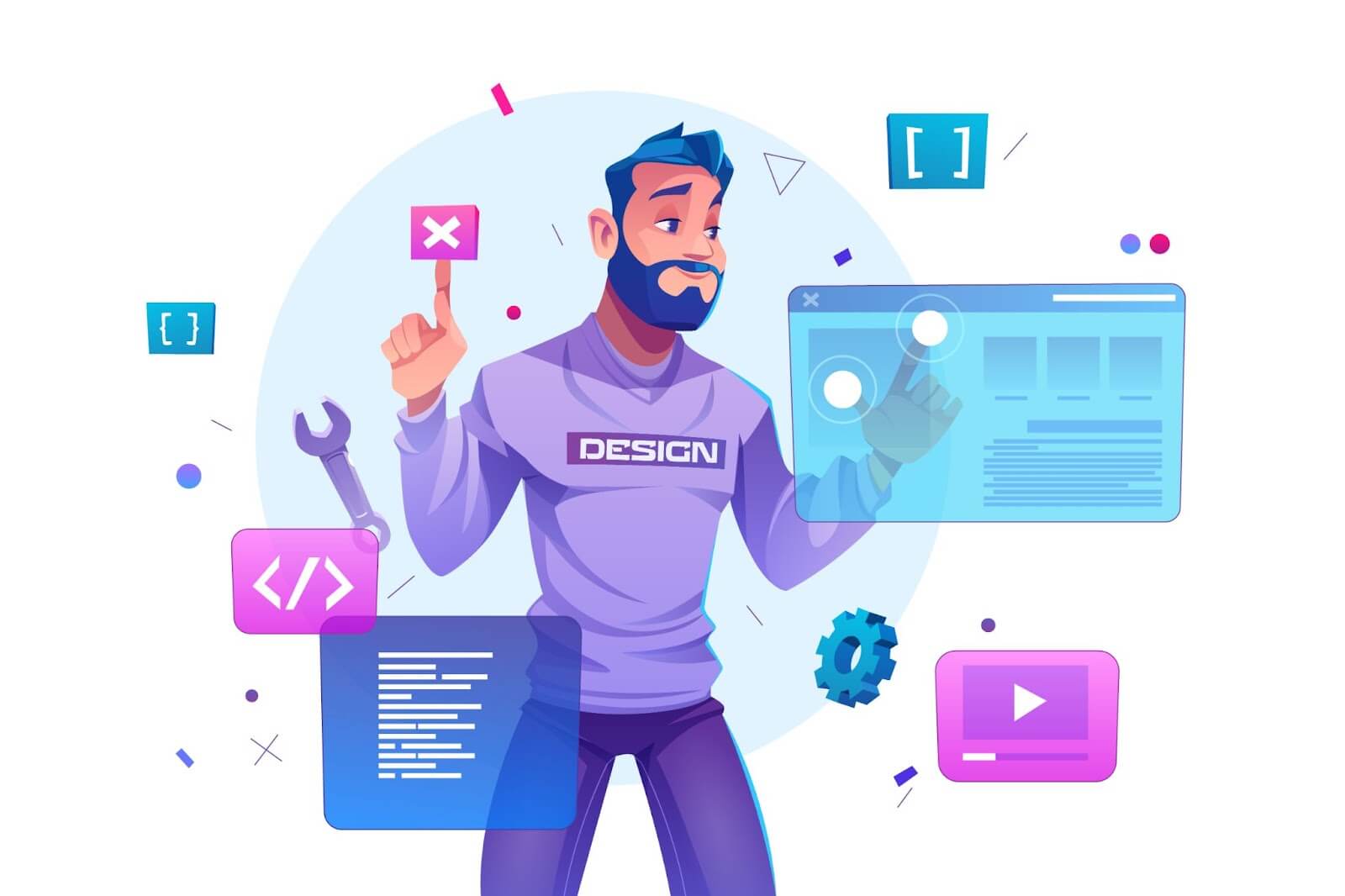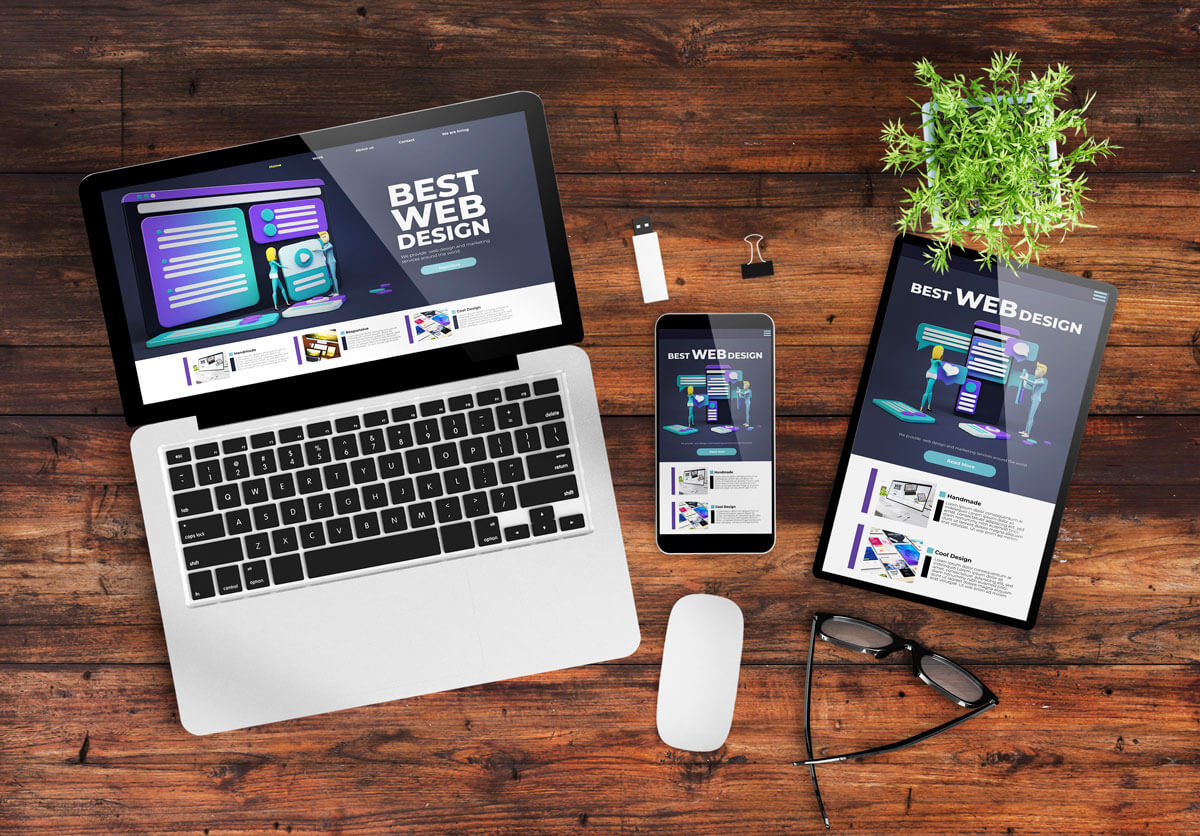Are you considering pursuing web design as a profession? Given the ever-growing demand for websites and online presence, it's no surprise that this field has become a sought-after career pathway. But like any path you take, there are pros and cons to weigh before deciding. This article will provide an in-depth look at both sides of web design - so read on to find out what advantages and drawbacks come with a career in this creative world!
Pros of Being a Web Designer

Image by Freepik
Creative Expression and Artistic Freedom
You can unleash your creativity and showcase your artistic flair as a web designer. Designing visually appealing websites allows you to experiment with colors, layouts, typography, and graphics. You can bring ideas to life and create unique digital experiences that captivate users. The ability to express your creativity is one of the most fulfilling aspects of being a web designer.
High Demand and Career Opportunities
Web design expertise is a necessary requirement in today's digital-driven age. Every business - no matter its size or industry - needs a refined website to stamp their presence on the web. This high demand translates into a plethora of career opportunities for web designers. Whether you're employed at a designing firm, an in-house designer at some company, or even as an independent freelancer; the job market has a plethora of possibilities for everyone.
Flexibility and Remote Work Options
With the ever-changing nature of the digital world, web design offers unparalleled flexibility that other professions rarely rival. You can work from wherever you are - at home, a café, or even while exploring the globe. Remote working empowers individuals with greater autonomy and affords more control over one's life outside of work hours. This freedom has served to create better working relationships and enabled an improved work-life harmony.
Continuous Learning and Skill Development
Web design is an ever-evolving landscape where professionals must stay informed and ahead of the curve to be competitive. It's a field that requires constant learning and inspiration as trends change rapidly. Professionals in this area have an exciting career development track, allowing them to continuously expand their knowledge, experiment with fresh strategies, and remain on the cutting edge of innovation. It's a thrilling venture for those wanting to impact digital culture and create captivating user experiences!
Competitive Salary Potential
Web designers often enjoy a competitive salary potential. As their experience and expertise grow, so do their earning opportunities. In addition to the base salary, web designers can also earn extra income through freelance projects or by offering additional services such as graphic design or user experience (UX) consulting. The potential for financial growth is promising in the field of web design.

Image by Freepik
Cons of Being a Web Designer
Long Hours and Workload
The responsibilities of being a web designer can be quite taxing, with long working hours and heavy workloads. Developing and designing websites often requires significant dedication, particularly when taking on elaborate projects or dealing with tight deadlines. Meeting customer expectations, juggle numerous projects at the same time, and troubleshooting technical problems can all result in an increase in work hours, as well as require one to work during the evenings or weekends.
Technological Advancements and Rapid Change
Rapid technological advancements characterize the world of web design. New design trends, programming languages, frameworks, and tools emerge frequently, requiring web designers to adapt and learn new skills constantly. Staying updated can be demanding and time-consuming, but it is essential to remain competitive in this ever-evolving industry.
Dealing with Challenging Clients
Like any client-based profession, web designers often encounter challenging clients. Working with clients with unrealistic expectations, lack of communication, or limited design knowledge can be challenging for any designer. It's mentally and emotionally taxing to try and navigate such difficult interactions while still delivering high-quality work. Successfully handling these customers takes patience, strong communication skills, and balancing expectations with results. Furthermore, having a firm grasp on basic design principles helps ensure that everyone can move forward in an organized manner.
High Responsibility and Pressure
Web designers are responsible for constructing visually attractive and completely functional websites tailored to their clients' and end-users' needs. This endeavor can be challenging, especially when undertaking high-profile assignments or those with stringent timelines. To produce successful results, web designers must stay organized and implement effective strategies for managing their time wisely while producing quality outcomes in a timely manner.
Additionally, they must utilize modern techniques such as SEO optimization so their work is compatible across all platforms and search engine results are maximized over time for increased website traffic. The pressure to deliver exceptional results while balancing multiple tasks can lead to burnout if not managed effectively.
Lack of Work-Life Balance
Web designers frequently struggle to maintain a healthy work-life balance because of how demanding their jobs are. The long hours and constant pressure to meet deadlines can encroach upon personal time and leisure activities. It requires discipline and effective time management skills to create boundaries and ensure a fulfilling personal life alongside a successful career in web design.

Image by Freepik
Conclusion
Choosing web design as a career has its fair share of advantages and disadvantages. It offers creative expression, high demand, flexibility, continuous learning, and competitive salaries. Creating websites is a rewarding career for those with an eye for design and a creative streak. While there is potential to make good money and advance their career, web designers must also be aware of the drawbacks of the profession. Working as a web designer may entail long hours, responding quickly to the latest technological advances, demanding clients with high expectations, and having responsibility for projects that can affect an entire business.
In addition, working freelance can cause a lack of work-life balance if not appropriately managed. Therefore, anybody considering this profession needs to take the time to assess their goals and preferences before deciding whether or not it is right for them by carefully weighing up all the pros and cons associated with it. Doing so can set them up to fulfill their dreams in web design.
FAQs
1. What are the typical work hours for web designers?
The work hours for web designers can vary depending on the project and the employer. The work hours for web designers can vary depending on the project and the employer. Web designers commonly work 9 am to 5 pm, yet they may need extra effort during crunch times when faced with impending project deadlines or client wants. Extended hours are not rare for web designers, as they strive to meet all the expectations. Thanks to modern technology, it is also possible for many web designers to work remotely and create stunning digital projects from any comfortable location.
2. What are the advantages of being a web designer in terms of salary?
Web design can be a surprisingly competitive industry, with salaries for experienced professionals potentially reaching quite high levels. It doesn't just include those working for established companies; freelance web designers who sign up for multiple clients can greatly increase their income by taking on extra projects and offering additional services. However, wages will vary depending on various factors, such as where one is based or works, their technical ability and the industry in which they are employed - medical or lifestyle.
3. How do web designers maintain a work-life balance?
Maintaining equilibrium between your professional and personal lives as a web designer is not effortless, yet it's completely feasible. Appropriately managing your time, enacting clear boundaries, and paying attention to self-care are essential advice. Constructing a daily framework, stepping away from your workspace regularly to breathe and relax, and participating in leisure activities that cultivate serenity and contentment away from work are all fundamental practices for work-life balance.
4. Are there any disadvantages of being a web designer?
Yes, there are several disadvantages of being a web designer. Working in the technology industry can be both rewarding and challenging. For those in leadership positions, the workdays often involve extended hours and hefty workloads to keep up with the rapid progress of modern tech. Additionally, project managers may have to contend with difficult customers, accept great responsibility, and deal with constant pressure. As a result, it can be hard for professionals within this field to maintain a healthy work-life balance.
5. What skills are necessary to succeed as a web designer?
To become a successful web developer, an individual must possess various skills and aptitudes.
- Firstly, one must have a firm grasp of design fundamentals and be highly-skilled in coding languages such as HTML, CSS, and JavaScript.
- In addition to this technical ability, proficiency in design applications and tools is vital for creating visually stimulating web projects. Creative thinking is also imperative as it can help bring innovative ideas to life. Equally essential is having the attention to detail needed for websites to function smoothly and without error. Problem solving capabilities are also essential when diagnosing potential issues on the fly. As communication between teams or clients is likely inevitable, excellent communication skills are also required here.
- Lastly but certainly not least; being passionate about ongoing education and development will set any aspiring web developer in good form for future success in this ever-evolving field.
All these aspects combined contribute to achieving superior quality results in website development. Understanding how digital components are woven together to produce coherent web experiences involves practice and continuity in the search for excellence.




